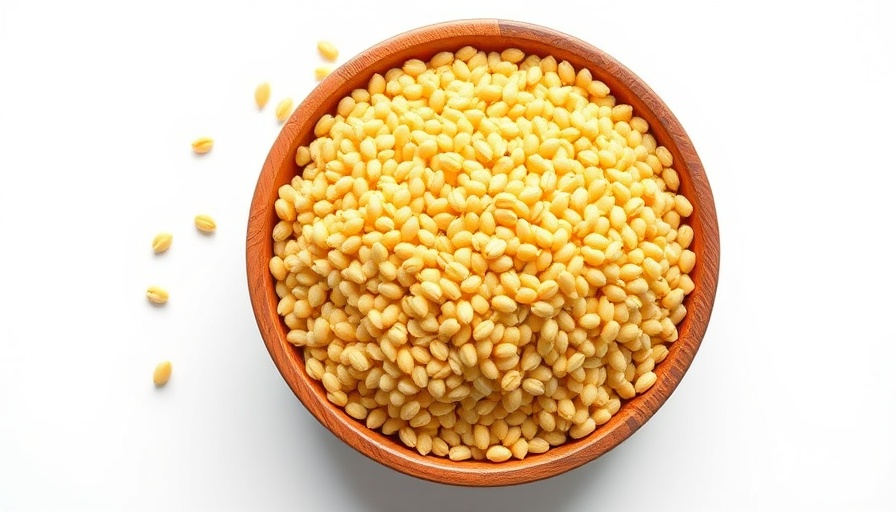
Why Millet is the Unexpected Hero for Men’s Health
If you're a man who cares about his health and fitness, you might want to pay attention to millet—a lesser-known grain that’s making waves in the nutrition community, particularly for its positive effects on diabetes. A recent randomized crossover study has revealed remarkable benefits of including millet in your diet, especially for managing blood sugar levels. But what makes millet so special?
Millet: The Grain with Hidden Power
One standout feature of millet is its high content of resistant starch, a type of carbohydrate that's resistant to digestion. Unlike standard grains like rice or wheat, which can spike blood sugar levels, millet's resistant starch serves as food for beneficial gut bacteria, promoting a healthier digestive environment. This leads to slower digestion and steadier blood sugar levels, which are crucial for those managing diabetes.
Research Findings: The Impact on Blood Sugar
In a controlled study involving hundreds of individuals with diabetes, researchers found that substituting a portion of a standard diet with millet resulted in a notable decrease in hemoglobin A1C levels, a key indicator of long-term blood sugar control. Prior to the study, participants had an A1C of 8.37; after integrating millet into their meals, that number dropped to an average of 6.77, surpassing the American Diabetes Association's target. This suggests that millet could play an important role in effective meal planning for men, particularly those concerned about navigating diabetes.
Why Stomach Emptying Matters
Another fascinating angle is how millet affects stomach emptying times. It’s been shown to slow down digestion, meaning that when consumed, it leads to a gradual release of sugars into the bloodstream, thus preventing sharp spikes. This slow release is vital for maintaining energy levels and managing hunger, making millet a quality carbohydrate source for active men, gym enthusiasts, and professionals alike.
Incorporating Millet into Your Diet
Thinking of ways to add millet to your meals? It can be as simple as switching up your grain choice in familiar dishes—try millet porridge for breakfast, or make a millet salad with vegetables and lean protein for lunch. By incorporating this nutrient-dense grain, you'll not only boost your intake of essential nutrients but also support better health outcomes.
Take Charge of Your Health Today
Understanding how to harness the food you eat can lead to significant changes in your health journey. Integrating millet into your meals is a simple, yet effective step toward better blood sugar control. So, why not give it a try? Prioritize your health by considering this grain as a pivotal part of your diet!
Remember, making thoughtful nutrition choices is not just about eating right; it’s about taking proactive steps to enhance your overall well-being. Explore meal planning strategies that incorporate millet, and discover how this super grain can work for you!
 Add Row
Add Row  Add
Add 




Write A Comment